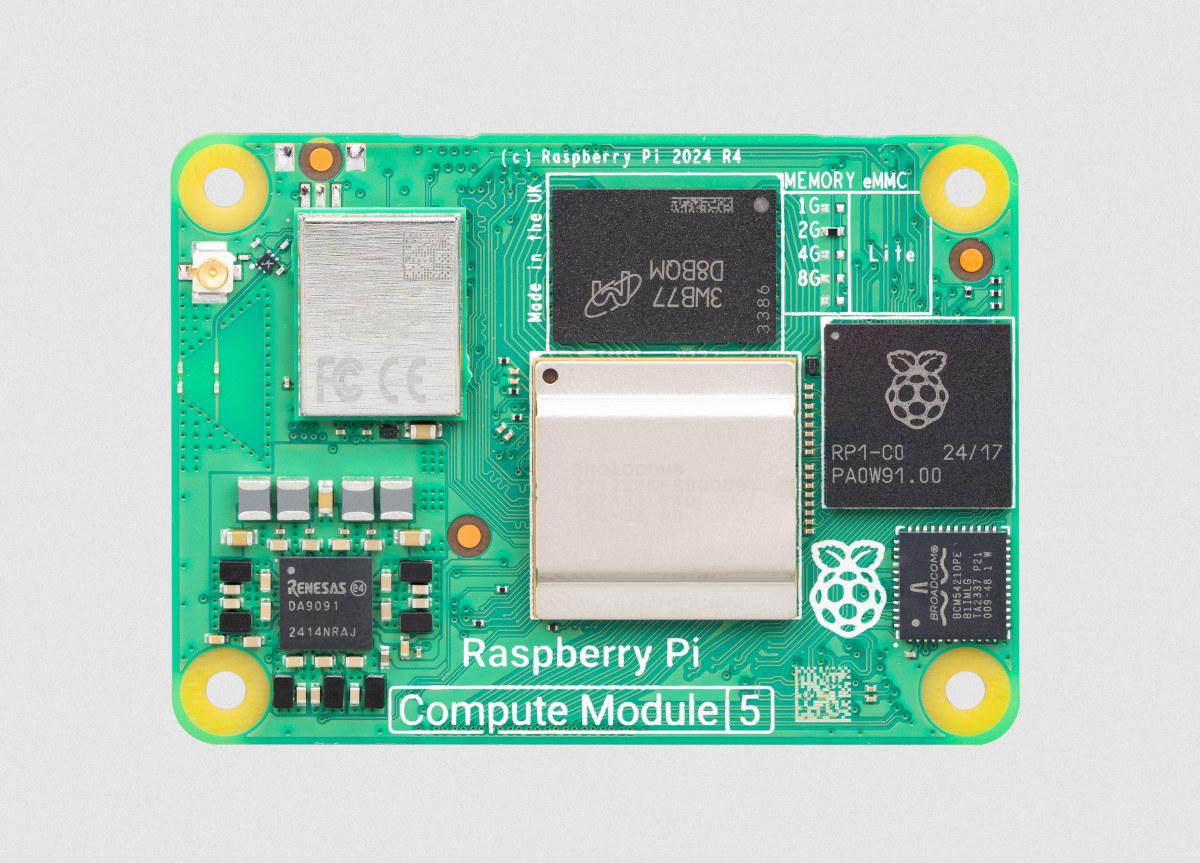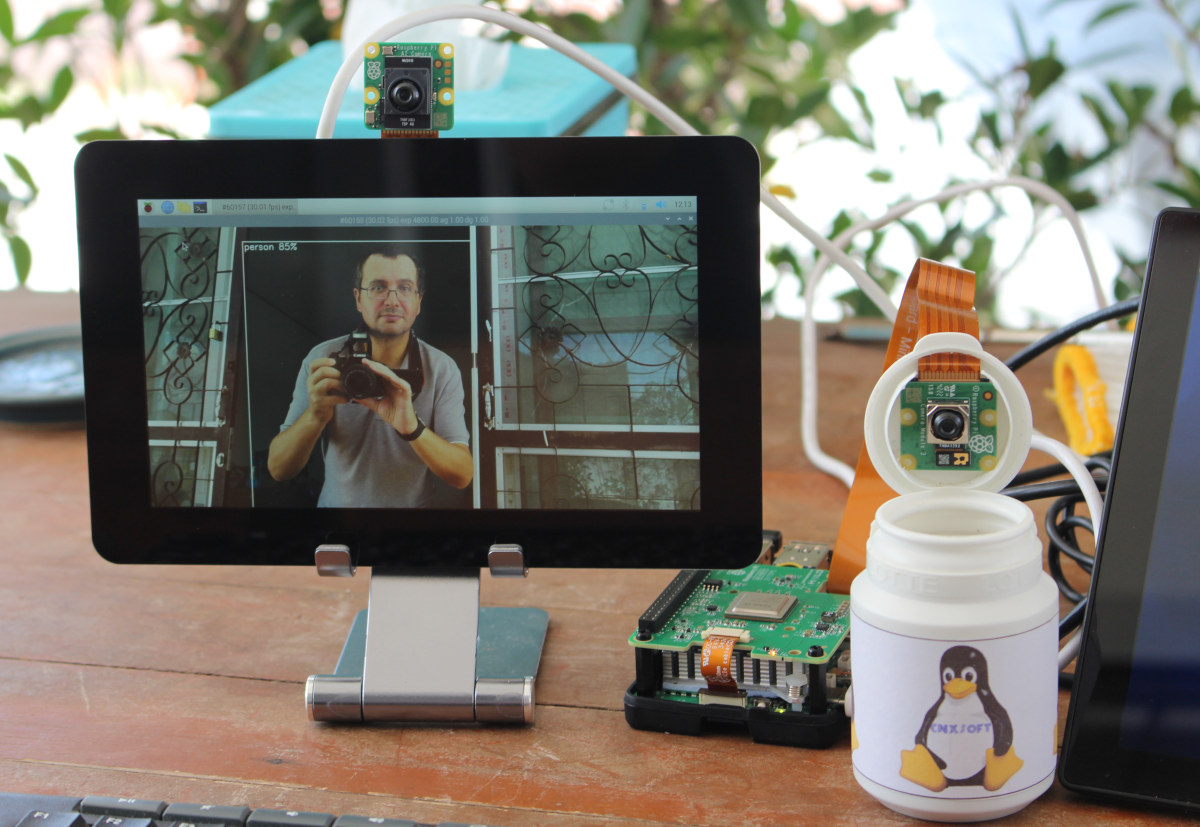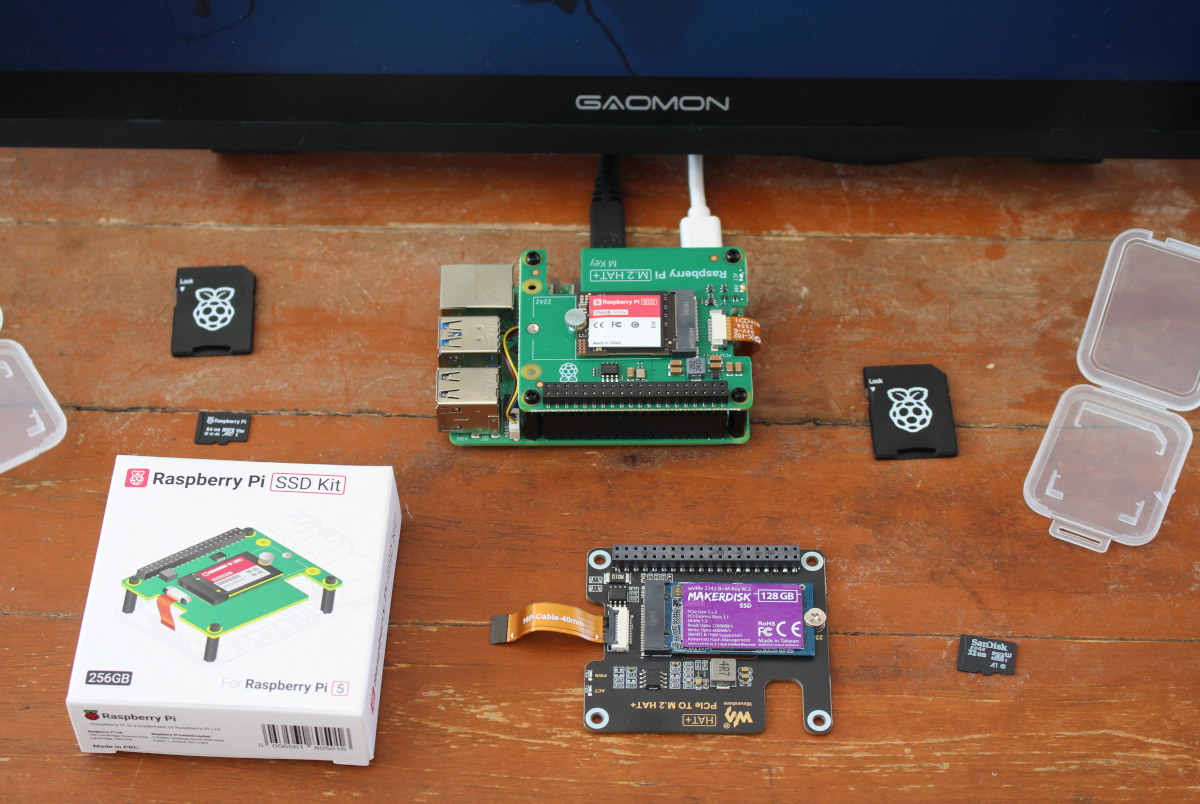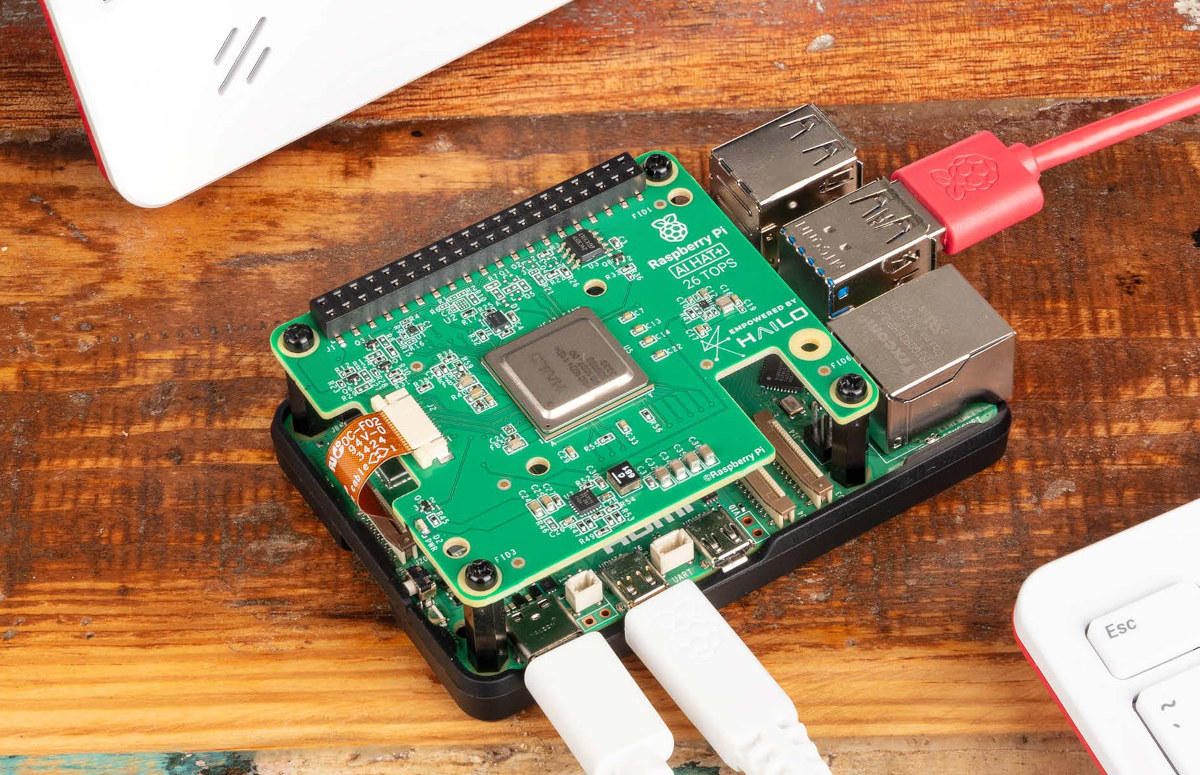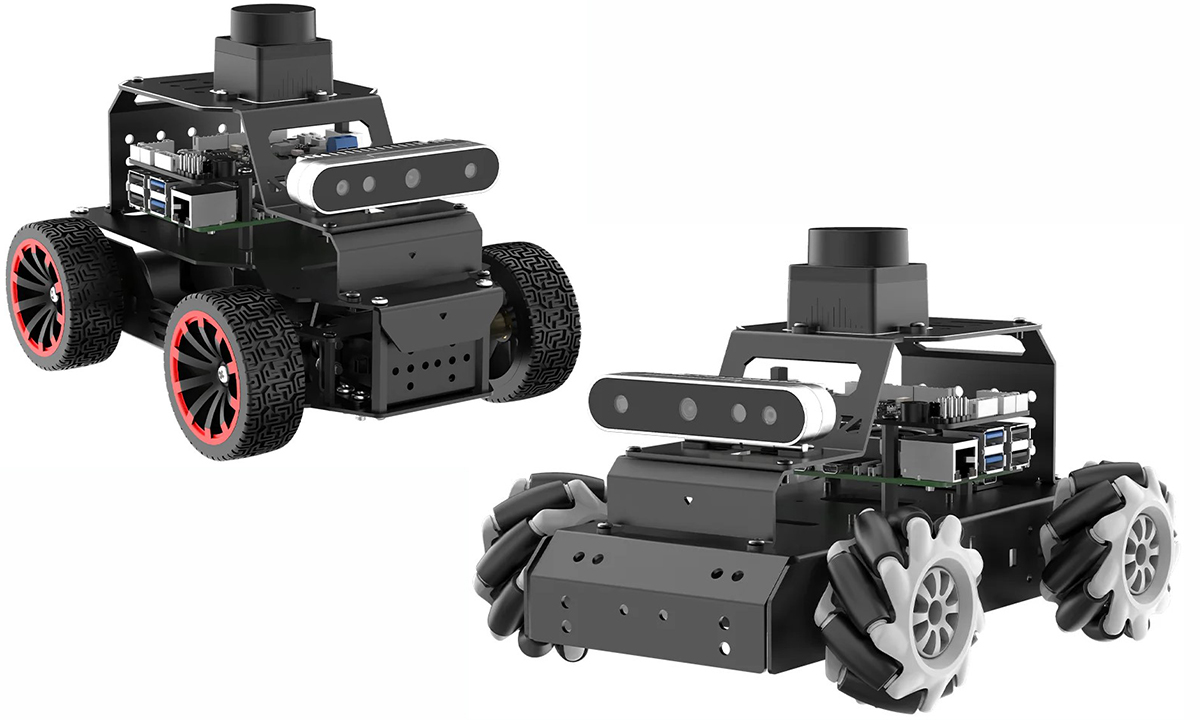The Raspberry Pi Compute Module 5, or Raspberry Pi CM5 for shorts, is now available with up to 16GB LPPDR4 ECC memory, up to 64GB eMMC flash, and an optional WiFi 5 and Bluetooth 5.0 LE wireless module. It has the same form factor as the Raspberry Pi CM4 and CM4 Lite launched in 2020 but delivers a significant performance boost. The Raspberry Pi CM5 is basically a tiny version of the Raspberry Pi 5 SBC designed for embedded applications with a Broadcom BCM2712 quad-core Cortex-A76 SoC, and offered with 2GB to 16GB RAM, optional 16GB to 64GB eMMC flash, and optional WiFi 5 and Bluetooth 5.0 module. As usual, there are also Raspberry Pi CM5 Lite versions without any eMMC flash meant to be booted from a microSD card or an SSD on the carrier board. Raspberry Pi Compute Module 5 Raspberry Pi CM5 specifications: SoC – Broadcom BCM2712 […]
Clipper HAT Mini – A Raspberry Pi 4G LTE pHAT with Qwiic/STEMMA QT connector
Pimoroni Clipper HAT Mini – also called “CLIPPER LTE Mini HAT” – is a Raspberry Pi 4G LTE pHAT that can use mobile data for remote projects where WiFi connectivity is unreliable or unavailable. The HAT is built around a SIMCom A7683E LTE Cat 1 modem with support for frequency bands B1/B3/B5/B7/B8/B20/B28, offering uplink speeds up to 5 Mbps and downlink speeds up to 10 Mbps. Other key features of this HAT include a SIM card slot, an SMA antenna connector (antenna sold separately), two user buttons, indicator LEDs, and a Qwiic/STEMMA QT connector for I2C modules. The board is designed to attach to Raspberry Pi (Zero) via a pre-soldered socket header and includes introductory global data coverage via a 1NCE SIM card. These features make this device suitable for IoT projects, mobile data collection, and remote-controlled devices in varied environments. Raspberry Pi LTE 4G HAT Specifications Compatibility – Supports […]
Getting Started with Raspberry Pi AI HAT+ (26 TOPS) and Raspberry Pi AI camera
Raspberry Pi recently launched several AI products including the Raspberry Pi AI HAT+ for the Pi 5 with 13 TOPS or 26 TOPS of performance and the less powerful Raspberry Pi AI camera suitable for all Raspberry Pi SBC with a MIPI CSI connector. The company sent me samples of the AI HAT+ (26 TOPS) and the AI camera for review, as well as other accessories such as the Raspberry Pi Touch Display 2 and Raspberry Pi Bumper, so I’ll report my experience getting started mostly following the documentation for the AI HAT+ and AI camera. Hardware used for testing In this tutorial/review, I’ll use a Raspberry Pi 5 with the AI HAT+ and a Raspberry Pi Camera Module 3, while I’ll connect the AI camera to a Raspberry Pi 4. I also plan to use one of the boards with the new Touch Display 2. Let’s go through a […]
Black Friday and Cyber Monday 2024 – International deals and coupons
While Black Friday and Cyber Monday used to be a US-only event, it changed many years ago, and we’ve been writing about international Black Friday and Cyber Monday deals and coupon codes since 2014, since a large portion of our audience cannot benefit from promotions on Amazon’s Black Friday and Cyber Monday events that will take place from November 21 until December 2 this year. So I’ve gathered some international Black Friday and Cyber Monday 2024 deals and discount coupon codes from relevant manufacturers and popular online stores such as Aliexpress, Banggood, and others. Aliexpress Black Friday and Cyber Monday event Aliexpress’ Black Friday and Cyber Monday 2024 event has already started. There are three periods: Nov 19-21 PST – Warm Up event where users can find and add items to the cart before purchasing during the main event. Nov 22-30 PST – “On Sale” event with discounts up to […]
Raspberry Pi SSD Kit and Class A2 microSD cards review with Raspberry Pi 5
Selecting a microSD card, and to a lesser extent an SSD, for your Raspberry Pi may feel like walking through a landmine field with fake microSD cards that may perform poorly and severely impact the performance and/or reliability of your Raspberry Pi, and you’ll find plenty of articles helping you select a good microSD card for your Raspberry Pi. That’s probably why Raspberry Pi Holdings decided to launch its own Raspberry Pi-branded class A2 microSD cards and NVMe SSDs, so users can be sure they got a certified storage device that should perform as advertised as long as they purchase those from some authorized resellers. The company sent me 32GB and 64GB Raspberry Pi microSD cards and a 256GB Raspberry Pi SSD kit for testing, so I’ll test those in this review and compare them against other SSDs and microSD cards I’m currently using. Since we’ve not covered the new […]
Raspberry Pi Touch Display 2 with 1280×720 resolution, thinner design launched for $60
Raspberry Pi has launched the Touch Display 2, a 7-inch touchscreen RGB TFT display with 1280×720 designed to be connected to Raspberry Pi single board computers. It improves on the original Raspberry Pi Touch Display with a higher resolution (1280×720 vs 800×480) and a slimmer form factor thanks to the integration of the display driver PCB into the display enclosure itself. Raspberry Pi Touch Display 2 specifications Display Type – 7-inch 24-bit RGB TFT display Resolution 1280 x 720 resolution Touch panel – 5-point multi-touch capacitive touch panel Active area – 155 x 88 mm Backlight type – LED B/L Surface treatment – anti-glare Host interface – MIPI CSI connector with ribbon cable compatible with all Raspberry Pi boards except the Raspberry Pi Zero line Power Supply – 5V DC via 2-wire, 3-pin connected inserted into the 40-pin GPIO header Dimensions – 189.32 x 120.24mm The back of the display […]
Raspberry Pi AI HAT+ features Hailo-8L or Hailo-8 AI accelerator with up to 26 TOPS of performance
The Raspberry Pi AI HAT+ is a PCIe expansion board for the Raspberry Pi 5 with either a 13 TOPS Hailo-8L or 26 TOPS Hailo-8 AI accelerator. You may remember the Raspberry Pi AI Kit was introduced last June with an official M.2 Key M HAT+ and a 13 TOPS Hailo-8L M.2 AI accelerator module, The new Raspberry Pi AI HAT+ is quite similar except the chip is soldered on the expansion board and offered with either Hailo-8L or the more powerful Hailo-8 variant. Raspberry Pi AI HAT+ specifications: Supported SBC – Raspberry Pi 5 AI accelerator Hailo-8L AI accelerator with up to 13 TOPS of performance Hailo-8 AI accelerator with up to 26 TOPS of performance Host Interface – PCIe Gen3 interface 16mm stacking GPIO header PCIe FPC cable Spacers and screws enabling fitting on Raspberry Pi 5 with Raspberry Pi Active Cooler Dimensions – 65 x 56.5 mm […]
MentorPi is a ROS2-compatible, Raspberry Pi 5-based robot car with Mecanum or Ackermann chassis
MentorPi is a ROS2-compatible robot car powered by the Raspberry Pi 5, designed for AI-driven robotics and Python programming. It offers two chassis options: MentorPi-M1, which features a Mecanum-wheel chassis, and MentorPi-A1, equipped with an Ackermann chassis. Both variants come with high-performance components such as closed-loop encoder motors, STL-19P TOF lidar, 3D depth cameras, and high-torque servos. These enable precise navigation, SLAM mapping, path planning, and dynamic obstacle avoidance, making MentorPi an ideal platform for robotics tasks. The system utilizes a dual-controller architecture to optimize performance. The Raspberry Pi 5 handles AI vision processing and strategic functions, while Hiwonder’s RRC Lite expansion board manages motion control and sensor data processing. This task distribution enhances efficiency in machine vision, AI-powered navigation, and robotic control, allowing MentorPi to tackle complex AI and vision-based applications with ease. MentorPi also supports advanced features like 3D visual mapping and YOLOv5-based object detection for recognizing road […]


